An Easy to Build Dresser Perfect for a First Project
I love the detail on the front drawers of this dresser! It is so simple but looks so elegant… The DIY plans to build a Brecken Dresser feature three wide drawers, and is a very easy build. It is the perfect project for those new to woodworking!
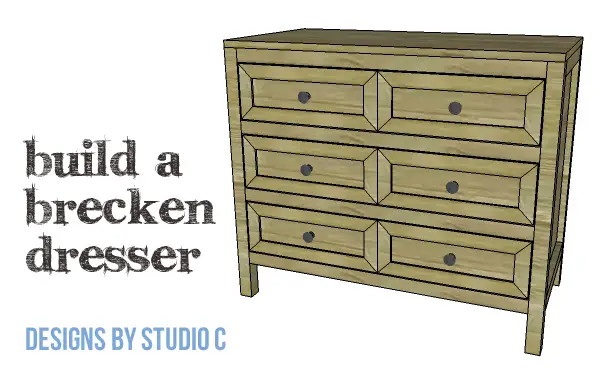
Materials:
- 1-1/4” pocket hole screws
- 2-1/2” pocket hole screws
- 1-1/4” brad nails
- 1-3/4” brad nails
- Edge banding (<–affiliate link!)
- 3 sets of 16” Drawer slides
- Cabinet pulls
- Wood glue
- Sandpaper (100, 150, 220 grits)
- Finishing supplies (primer & paint, or stain, sealer)
Lumber:
- 8 – ¼” x 2 craft boards at 3’
- 3 – 1×6 at 8’
- 4 – 2×2 at 8’
- 1 – 4’ x 8’ sheet of ¼” plywood
- 1 – 2’ x 4’ sheet of ½” plywood
- 1 – 4’ x 8’ sheet of ¾” plywood
Cut List:
- 4 – 2×2 at 29-1/8” – Legs
- 4 – 2×2 at 15” – Side Framing
- 2 – ¾” plywood at 15” x 21-3/4” – Side Panels
- 6 – 2×2 at 32” – Front & Back Stretchers
- 1 – ¼” plywood at 24-3/4” x 33-1/2” – Back
- 1 – ¾” plywood at 18-1/4” x 35” – Top
- 6 – 1×6 at 16” – Drawer Box Sides
- 6 – 1×6 at 31” – Drawer Box Front & Back
- 3 – ¼” plywood at 15” x 31-1/2” – Drawer Bottom
- 3 – ½” plywood at 6” x 31-3/4” – Drawer Front Base
- 12 – ¼” x 2” craft board at 6” – Drawer Front Trim
- 12 – ¼” x 2” craft board at 15-7/8” – Drawer Front Trim

Notes about the DIY Plans to Build a Brecken Dresser:
- Edge banding is applied to any exposed edges prior to assembly
- Bottom Mount or Ball Bearing drawer slides can be used
- Try decorative trim instead of plain trim on the fronts!
- Plans for a matching hutch
Step One
Cut the pieces for the legs and the side framing. With the pocket hole jig set for 1-1/2” material, drill pocket holes in each end. Secure the framing pieces to the legs using glue and 2-1/2” pocket hole screws.
Cut the pieces for the side panels. Set the pocket hole jig for ¾” material and drill pocket holes in all four edges. Secure the panels to the side frames using glue and 1-1/4” pocket hole screws. The back face of the panel will be flush with the back face of the frame.

Step Two
Cut the pieces for the stretchers. Set the pocket hole jig for 1-1/2” material and drill pocket holes in each end. Secure the stretchers as indicated in the drawings using glue and 2-1/2” pocket hole screws.


Step Three
Cut the piece for the back panel. Position the back panel so the top is flush with the top of the back legs securing in place using glue and 1-1/4” brad nails.

Step Four
Cut the piece for the top. If using edge banding, it will be applied to the exposed edges of the top prior to attaching the top to the cabinet. Position the top on the cabinet so that the sides and front are flush with the legs, framing, and front stretchers (the top will overhang the back panel) securing in place using glue and 1-3/4” brad nails.

Step Five
Cut the pieces for the drawer box sides, front, and back. Cut the groove in the bottom edge of each piece at 1/4″ wide by 1/4″ deep using a table saw or a router and a straight bit. Set the pocket hole jig for 3/4″ material and drill pocket holes in each end of the drawer box front and back pieces on the opposite side as the groove. Make sure that the pocket holes will not interfere with the groove. Secure the sides to the back using glue and 1-1/4″ pocket hole screws.


Step Six
Cut the piece for the drawer bottom. Slide the bottom into the grooves in the sides and back. The piece should fit snugly but not too tight.
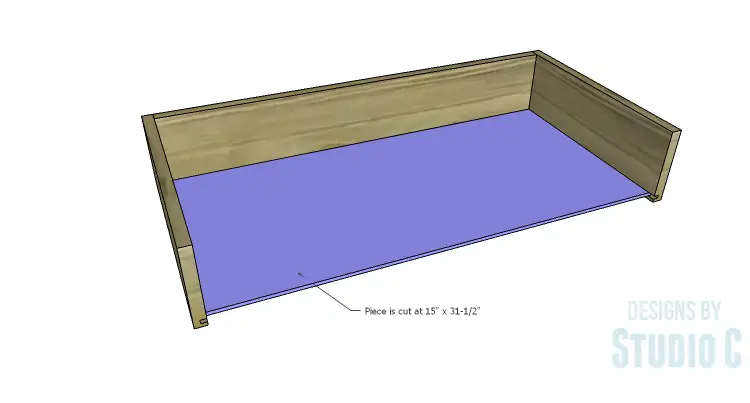
Step Seven
Insert the front edge of the drawer box bottom into the groove on the drawer box front. Secure the drawer box front to the drawer box sides using glue and 1-1/4″ pocket hole screws. Install the drawer slides according to the manufacturer’s installation instructions locating them ¾” back from the front edge of the sides.

Step Eight
Cut the pieces for the drawer fronts. Cut the ¼” detail pieces with 45° miters at each end. Evenly spread glue on the back side of each piece and clamp the pieces in place until dry.
Mark the position for the drawer pulls and drill the holes. Shim the drawer front in the opening – there will be a 1/8” gap around all sides – then drive screws through the holes for the drawer pulls into the drawer box. Open the drawer, and secure the drawer front using countersunk 1-1/4” screws from the inside. Remove the screws from the holes for the drawer pull then finish drilling the holes. Install the drawer pull. This easy tutorial on installing drawer fronts will helps!
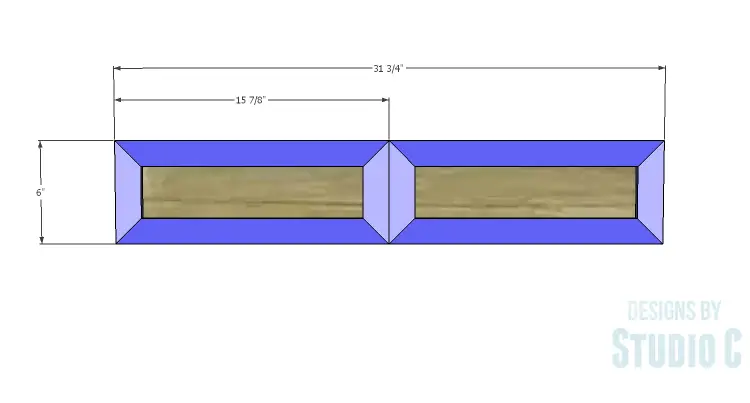
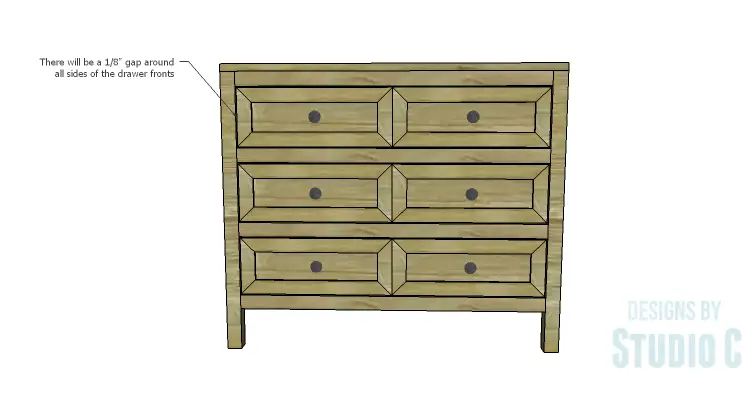
Finish as desired.
This dresser would be perfect as storage in any room – in an entryway, a dining room, or in a pair in a bedroom. Have any questions about the DIY plans to build a Brecken Dresser? Leave a comment below!
Originally posted 2015-10-29 08:00:52.




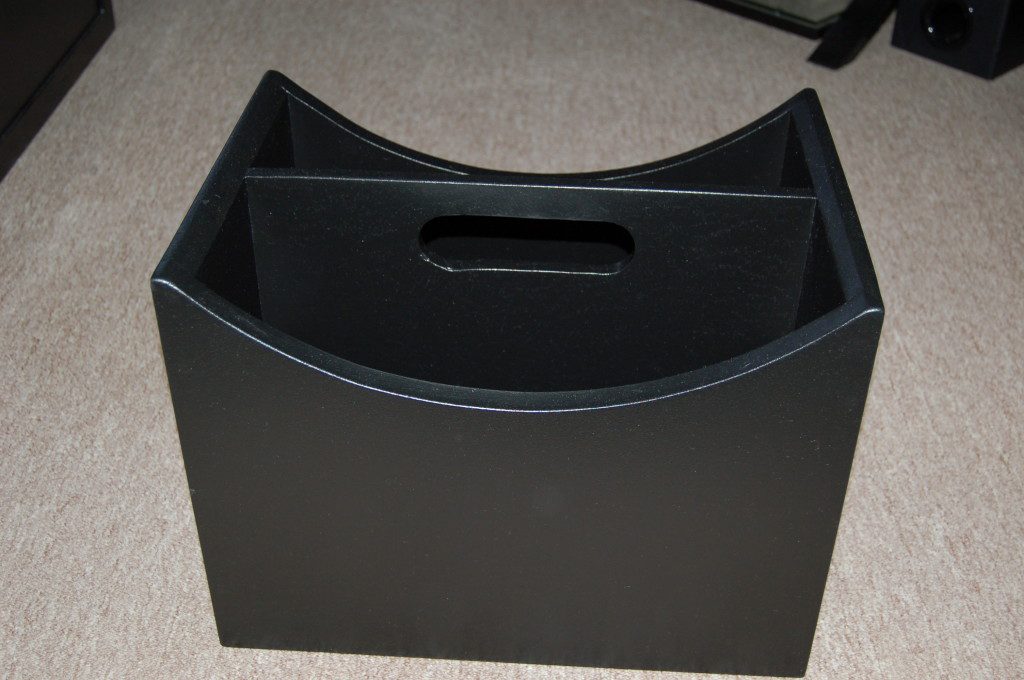

Comments are closed.